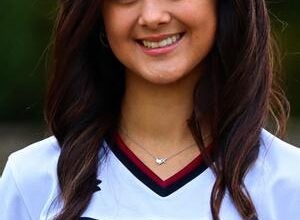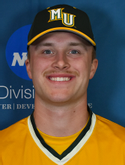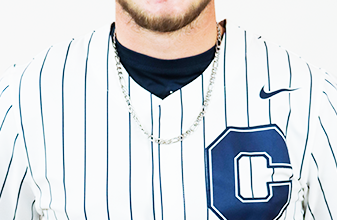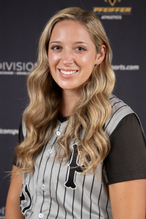'The Pearl' paid visit to Trent Gym nearly 40 years ago
Published 12:00 am Tuesday, December 26, 2006
By Mike London
Salisbury Post
Winston-Salem State senior Earl Monroe took it easy on Livingstone on his visit to Trent Gym on Dec. 7, 1967.
Monroe scored a breezy 30 points, only nine more than Livingstone leader James Berry, then watched the rest of the Rams’ 103-69 rout of the Blue Bears.
More would be at stake the next time Monroe and Livingstone matched up in Winston-Salem. By February, coach Clarence “Big House” Gaines’ Winston-Salem State team was on a roll and Monroe was threatening every college scoring record.
Raised by a storekeeper mother and a stepfather who worked for the police department, Monroe grew up in South Philadelphia with soccer as his first love.
In junior high, he ignored the outdoor basketball courts until a short-handed squad called on him to even up the teams one afternoon.
Monroe was terrible in his first roundball experience, but he was hooked and started playing basketball 10 hours a day. After a broken leg ended his soccer aspirations, he devoted his energy exclusively to basketball.
Monroe didn’t make varsity until the middle of his junior year at John Bartram High. He became a legend his senior year in the gyms and on the playgrounds of Philadelphia where he earned nicknames such as “Magic” and “Black Jesus” — the latter because he could perform miracles with a basketball in his hands.
Monroe was content to work the playgrounds and a $60 a week job as a factory shipping clerk for a year after graduating high school, but a Winston-Salem State grad named Leon Whitley let Gaines know about him.
Gaines often said Monroe finally decided to come to Winston-Salem State because of “grits, gravy and me.”
Monroe and Gaines butted heads his freshman year in 1963-64. Monroe couldn’t believe he wasn’t starting. Gaines, a gridiron star at Morgan State who had originally come to Winston-Salem to coach football, was reluctant to break up a winning combination.
Monroe finally cracked the lineup late in his freshman year and was All-CIAA in 1965 and 1966.
Monroe and William English led a sensational team in 1966-67. The Rams dropped their opener to High Point 89-84, then started cruising.
The 6-foot-3, 182-pound Monroe, all wiry arms and legs, put up 35s, 45s and 50s and did it in style, playing to the crowd like a Globetrotter. His range was 35 feet in an era before the 3-point shot.
Monroe wasn’t exceptionally fast and didn’t jump especially high, but he had mastered the behind-the-back dribble, the crossover and every conceivable one-on-one move.
He could spin left or right off any defender — the closer he was guarded the easier it was for him — and he could hang in the air as long as necessary to shoot. He’d pass the ball behind his back to himself and finish with either hand.
The crowds at Winston-Salem State’s Whitaker Gymnasium chanted, “Earl, the Pearl — best in the world.”
The nickname stuck.
Livingstone was supposed to play the Rams at Whitaker in mid-February, but Monroe had gotten the attention of national media and was attracting an audience beyond the CIAA.
So many white fans clamored to watch Monroe get his 1,000th point of the season against Livingstone that the game was moved from Whitaker Gym to Winston-Salem Coliseum.
Monroe needed 42 against the Blue Bears, but no one doubted he’d get all he wanted until he fell to the floor hard early in the game. He got up in agony, shaking a badly sprained wrist. But he shrugged it off and started swishing jumpers.
Suddenly, Monroe had 41 points, and as he jogged past his bench, he saw the massive figure of Gaines holding up one finger.
Monroe understood he needed one more point. He missed from 20 feet but then connected from 25 to reach the milestone. The game was stopped to honor the achievement, and even Livingstone fans applauded.
Monroe finished his night’s work with 53 points on 23-for-46 shooting. He dished out nine assists and grabbed 10 boards in a 115-77 victory.
The Rams lost to North Carolina A&T in the semifinals of the CIAA Tournament — ending a two-month winning streak — but still got a bid to the national tournament.
Monroe scored 49 against Akron in the regional final, and the Rams headed to Evansville, Ind.
Monroe scored 29 against Long Island in the national quarterfinals to lift his season total to 1,265 points, eclipsing the record of 1,255 established by Bevo Francis at Rio Grande in 1954.
Monroe was held to 24 by defending national champion Kentucky Wesleyan, but his teammates came through in an 82-73 victory that put the Rams in the title game.
Monroe dropped 40 as Winston-Salem State (30-2) beat Southwest Missouri’s Bears 77-74 for the championship and became the first historically black college to win a national title.
Monroe shot 16-for-30 from the floor and made the two free throws that clinched the trophy. He finished his spectacular season with 1,329 points and averaged 41.5 per game.
The Baltimore Bullets lost the coin toss with the Detroit Pistons to determine the first pick in the 1967 NBA draft. The Bullets (now the Washington Wizards) groaned when the Pistons grabbed Providence’s Jimmy Walker, the player they wanted, and settled for Monroe with the second pick.
Walker, who played at Laurinburg Prep in North Carolina before signing with Providence, was a solid pro — even better than his son, Jalen Rose.
Monroe was more special than Walker, despite arthritic knees and ankles that limited a career that could have been mind-boggling.
In his Rookie of the Year debut with the Bullets, Monroe scored 2,065 points, averaged 25.7 a game and turned every game into “Showtime.” He poured in 56 against the Los Angeles Lakers and scored 13 in overtime against the Pistons.
Monroe earned a championship ring with the New York Knicks in 1972-73 after he was united in an all-star backcourt with long-time adversary Walt Frazier.
Monroe averaged 18.8 points a game in a 13-year NBA career and was the spokesman quoted most when the legendary Gaines passed away in 2005.
Monroe was named one of the 50 greatest NBA players in 1996, but his greatness started three decades earlier — in places like Livingstone’s Trent Gym.
n
Contact Mike London at mlondon@salisburypost.com.





